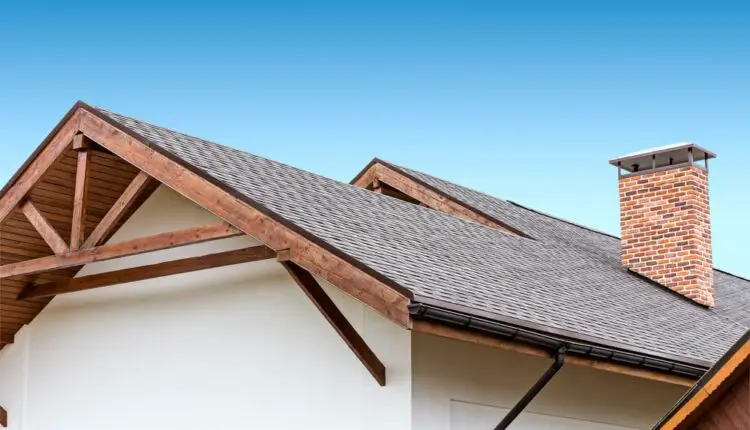Roof Pitch Calculator | Calculate Your Slope, Rise & Pitch
Articles, products, and services offered on this site are for informational purposes only. We are part of the Amazon Services LLC Associates Program, an affiliate advertising program. Amazon.com is compensated for sales resulting from links on our website.
Please review our disclaimer before acting based on anything you read or see.
Determining the roof’s pitch is crucial to the overall roof design. Thus it must be carried out carefully and attentively using the roof pitch calculator. Please read this post below to understand how to do this calculation.
Furthermore, the roof pitch is governed by the surroundings and the climate. Snowfall is heavy in places like Canada and Northern Europe. Low-pitch roofs may thus be problematic since too much snow accumulation can make the roof collapse under its weight. Problems may also arise from steep roofs since snow is more prone to slide to the eaves. This might harm the roof and put those below at risk.
In all, measuring the roof pitch with the help of the Roof Pitch Calculator might be beneficial for estimating needs. Come along as we highlight more on this below.
What is Roof Pitch?
Roof pitch is only how steep (angular) your roof is. Although the word “pitch” is often used in the roofing business, you may also hear the phrase “roof slope.” The roof pitch indicates how much higher the roof is above the ground for every 12 inches of depth. For instance, a “6/12 pitch” roof increases by 6 inches every 12 inches, and the roof extends inwards toward the peak or ridge.
Another term with several connotations is pitch, although when used for roofs, it merely refers to measuring the roof’s steepness or slant. A fraction can also be used to express a ratio. For example, 1/3 or 1/4, or an extended fraction such as 3/12 or 9/12, expressing the ratio of span to rise in numbers.
Roof Pitch Calculator
How to Calculate Roof Pitch?
You may figure out the roof pitch using the following techniques:
Method A: Measure from the roof.
Climbing onto the roof and measuring the rise for a 12-inch run is one approach to determine the pitch. A 12-inch or longer level and a tape measure are required.
Calculate the distance from the roof to the level 12 feet away from where the level meets the surface while holding the level completely still on the roof; this measurement will represent the rise.
The pitch is 4:12. For instance, if the end of a level is four m above the ceiling at a position 12 inches from where it meets the surface.
Method B: Measure from the attic.
Going into the attic and measuring the rise over a 12-inch stretch of the roof rafters is yet another way to determine the roof pitch. You may do this to determine the pitch without climbing onto the roof.
Hold a level firmly, with one end contacting a rafter from the attic. The length of the level from the rafter to the point where it contacts the roof is 12 inches.
Why calculate Roof Pitch?
Understanding your roof’s pitch is crucial since it influences the roofing system and materials that will work best for your residential or business structure. The elevation of your roof pitch also aids in figuring out how difficult the roof’s architecture is and how roofers approach their task.
What is the standard pitch of a roof?
Many individuals are interested in learning a building’s typical roof pitch. There has yet to be a single accepted roof pitch. The range of common pitches in the USA is between 4/12 and 9/12. The normal British home has a pitch of 40° to 50°, while 45° should be discouraged.
Modern homes sometimes feature “flat roofs,” which should be about 1:40 and not fully flat. The range of angles in Italy, which has a more moderate environment, is 16–25.
Some factors which affect the standard pitch of a roof include:
- Culture
- Climate
- Style
- Available resources
Additionally, these elements define the appropriate range of pitches for certain structures. This has also been highlighted in the infographic below.

How do you Calculate the Slope of a Roof?
The slope of a roof may be determined in a variety of ways. One of the finest methods to accomplish this is to use the rafter to assist you in measuring from underneath. A rafter accessible in homes with attics may be used to determine the slope. The findings are the most precise when measuring the precise slope ratio since rafters offer an even measurement area.
A level must be placed against the rafter’s underside to complete the operation. Ensure that the level is constantly in place and that the bubble is in the exact middle of the two lines. Next, locate the rafter’s 12-inch mark, measured from the level. Once you’ve located the mark, gauge how much the roof is above it. You need to record the measurements to determine the roof’s slope. The measurements may be given in a straightforward ratio without needing to be split down.
What is the Minimum Slope of a Roof?
Regular asphalt shingles may be used on low-slope roofs. However, most roofing material producers suggest a minimum slope of 2/12. To be cautious, some manufacturers even recommend a minimum of 4/12.
Roofing technologies like single-ply or built-up roofing films are often used at slopes less than 2/12.
Frequently Asked Questions
What is a 4/12 roof pitch?
A roof is considered to have a “4 in 12” slope if it climbs 4 inches for every foot or 12 inches of run. A ratio may be used to represent the slope quantitatively.
What roof pitch is 30 degrees?
A 7/12 roof pitch and a 30° roof pitch are similar in size.
What is the most common roof pitch?
Conventional slope roofs with a pitch between 4/12 and 9/12 are the most typical in residential construction. Slope roofs are those with pitches greater than 9/12. Low-slope roofing with a pitch around 2/12 and 4/12 is most often used in commercial construction.
What is the best pitch of a roof?
According to international construction codes, the recommended minimum roof pitch is 1/4:12. This implies that the height of the roof should fluctuate by at least 1/4 inch for every 12 inches of the roof’s course.
What is the minimum pitch for a lean-to roof?
A minimum pitch of 20° has historically been advised. Roofs with angles as low as 12.5° may now be constructed that work just as well. Any angle below 12.5° is regarded as a flat roof.
Is a 3/12 roof pitch good for snow?
Yes. In snow territory, roof pitches of 3:12 work well.
Is a 4/12 roof steep?
The most frequent slopes are approximately 6/12, and anything less than 4/12 is often considered low pitch. A steep pitch provides some benefits. Because they are classy and appealing to the eye, many residential roofs are built for higher slopes.
Is 3/12 A good roof pitch?
Roofs up to 3:12 are often referred to as having a “low slope.” In the residential sector, reduced slope roofs are a common feature of architecturally designed homes. Additionally, it’s uncommon to have low-slope roofs on certain structures, such as porches. Manufactured houses are another typical location for these roofs.
Can you put shingles on a 1/12 pitch roof?
Asphalt shingles need a roof pitch of 2:12 or higher as a minimum. A roof must have a minimum pitch of 2-1/2:12 or higher to accommodate clay and concrete tile. Roof pitches must be at least 3:12 for metal roof shingles. The minimum roof pitch for mineral-surfaced roll roofing is 1:12 or higher.
Expert Opinion
The roof’s elevation, the swing’s length, and the coverage area may all be calculated using the roof’s pitch. Additionally, this information may determine the number of tiles to be utilized in the project, preventing material waste.
In general, the procedure is easy and quick. However, as the account uses many units of measurement, there may be some clarification, resulting in project problems. Thus, the Roof Pitch Calculator will aid you immensely.



Comments are closed.